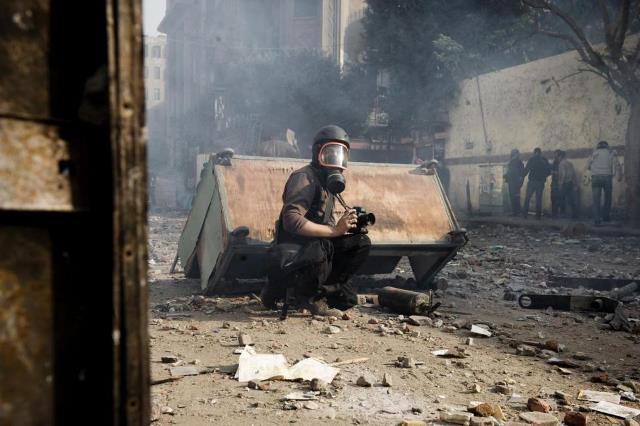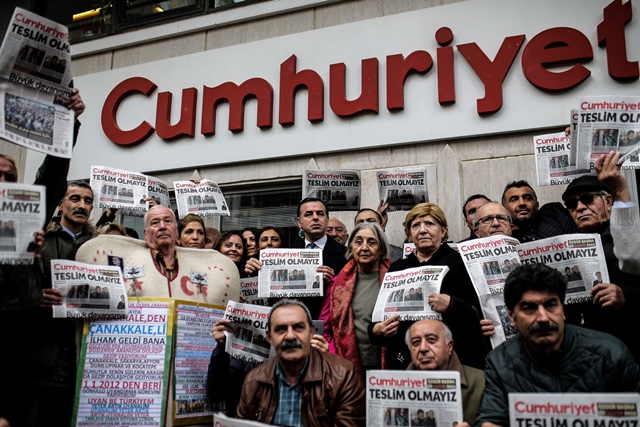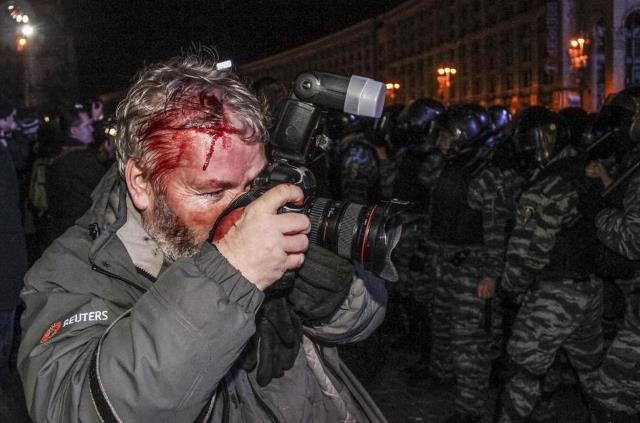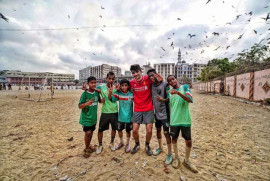
During the last decade, 827 journalists have been killed while on the job, the UNESCO director-general's report said. The worst hit areas were Arab States including Syria, Iraq, Yemen and Libya. Latin America is the next worst affected region, the Safety of Journalists and the Danger of Impunity report said.
110 journalists killed in 2015, mostly in 'peaceful' countries: RSF
Unsurprisingly, most deaths -- 59 per cent over the last two years of the 2006-2015 report -- happen in conflict zones. During that period, 78 of the 213 journalists killed (36.5 per cent) were in Arab States. Perhaps most alarming was the increase in journalist deaths in Western Europe and North America, up from none in 2014 to 11 last year.
 Turkish police on October 31, 2016, detained the editor-in-chief of the newspaper Cumhuriyet -- a thorn in the side of President Recep Tayyip Erdogan -- as Ankara widens a crackdown on opposition media. PHOTO: AFP
Turkish police on October 31, 2016, detained the editor-in-chief of the newspaper Cumhuriyet -- a thorn in the side of President Recep Tayyip Erdogan -- as Ankara widens a crackdown on opposition media. PHOTO: AFPLocal journalists are far more at risk than foreign journalists, accounting for 90 per cent of the victims. But there was a huge spike in foreign journalist deaths in 2014 with 17 killed compared to an average of four in previous years.
India deadliest nation for journalists
Last year saw a massive increase in online journalists being killed, with 21 compared to two in 2014. Almost half of those were Syrian bloggers. The report found that more than 10 times as many men are killed than women -- 195 to 18 in 2014/15 -- while television journalists have overtaken print hacks as the most vulnerable. The report noted that death is not the only harm journalists are exposed to.
 Journalists, including New York Times photographers Tyler Hicks (R- in glasses) and Lynsey Addario (far L), Getty Images photographer John Moore (2nd L), freelance photographer Holly Pickett (3rdL) and freelancer Philip Poupin (4th L) run for cover during a bombing run by Libyan government planes at a checkpoint near the oil refinery of Ras Lanuf March 11, 2011 PHOTO: REUTERS
Journalists, including New York Times photographers Tyler Hicks (R- in glasses) and Lynsey Addario (far L), Getty Images photographer John Moore (2nd L), freelance photographer Holly Pickett (3rdL) and freelancer Philip Poupin (4th L) run for cover during a bombing run by Libyan government planes at a checkpoint near the oil refinery of Ras Lanuf March 11, 2011 PHOTO: REUTERS"The extent of the risks faced by journalists is demonstrated by the 827 killings recorded by UNESCO over the course of ten years," said the report.
Protection for journalists
 Wounded Reuters photographer Gleb Garanich, who was injured by riot police, takes pictures as riot police block protesters during a scuffle at a demonstration in support of EU integration at Independence Square in Kiev November 30, 2013. PHOTO: REUTERS
Wounded Reuters photographer Gleb Garanich, who was injured by riot police, takes pictures as riot police block protesters during a scuffle at a demonstration in support of EU integration at Independence Square in Kiev November 30, 2013. PHOTO: REUTERS"To this, one needs to add the countless other violations endured by journalists, which include kidnappings, arbitrary detention, torture, intimidation and harassment, both offline and online, and seizure or destruction of material."
The report was requested by 39 member states of UNESCO's Intergovernmental Council.









































COMMENTS
Comments are moderated and generally will be posted if they are on-topic and not abusive.
For more information, please see our Comments FAQ